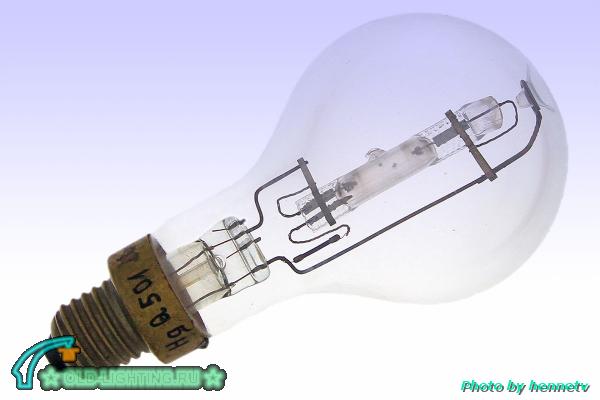HgQ 501 (BGW)
 (4)
(4)
Тип: HgQ 501
Изготовитель:
Страна происхождения:
Дата выпуска: 1950
Ранняя ртутная лампа производства BGW. Возможно, опытный экземпляр. Цоколь и маркировка этой лампы крайне необычные.
Из коллекции  hennetv. Добавлено: пт, 28.08.15, 00:55
hennetv. Добавлено: пт, 28.08.15, 00:55
 (4)
(4)
- Войдите или зарегистрируйтесь, чтобы отправлять комментарии


Комментарии
Is it really HqG or HgQ as can be read on the lamp?
Rigo, i would like to understand, how to read the code of lamp. I see E27, and the burner is similar to 50W. But what does 1? This lamp preceded of classic mercury lamps or in similar bulbs produced and with phosphor?
What is unique in this lamp (prototype)?
Кстати, хочется отметить сушествующий стереотип многих участников о влиянии кол-ва резисторов на надежность зажигания, на чем любят делать акцент при описании лампы. Для меня этот элемент видится напротив дополнительной перестраховкой не столь надежной продукции.
Yes, the lamp has an E27 socket. The burner is about the size of a 125W lamp. The 501 is the indication in dL.
A date code does not have this lamp. I have the lamp directly from the research department. Striking is the base - and the glass-stamp inside. So it was used for rectifier tubes.
Several resistors increase also in my opinion the probability of ignition. But it is certainly a question of the burning position. Base up or down. An ignition electrode on either side is better for lamps with any burning position.
I am also convinced that more auxiliary electrodes contribute to successful lamp ignition in cold conditions (-25°C and less), though some people would disagree
Hmmm? For igniting in very cold weather, I lamps without ignition electrode. But in these lamps are heated Elketroden - similar to fluorescent tubes
However, Narva was manufacturing one resistor and reliability of lamps was high in any position. ))
I think that the particular cases of individual parties should not be considered seriously. Even well-known to all the factory ЛИСМА (LISMA) in the early '90s make DRL125 with one resistor and i saw a lot of lamps that are perfectly included even in the bitter cold to -25. They failure of only from blow of stone. ))
In first time, if do not compare with the socket, the burner seemed me a little less. And excuse me, what is DL?
1dl = 10 lumens (deca lumens) For HGH lamps or old incandescent performance was often so indicated.
NARVA also built lamps with two ignition electrodes. Around 1967 they were called, for example, HSW 250 XX - lamps always marked with the XX were two ignition electrodes. Later, there were all three options - up, down or two (not marked on the base)
Yeah but I still remember that batch of three-electrode Belgium HPL-Ns by Philips, which all failed at -30°, while Lisma's four-electrode DRLs were still igniting...
It seems to me that the second electrode for more reliable ignition in case the drop of mercury will close one of the main igniter.
Мне кажется, что второй электрод для более надёжного зажигания на тот случай, если капля ртути замкнёт один из зажигающих электродов с основным.
Precisely! I think so too - as written above. Regardless what Burning position - an ignition electrode remains free from mercury
Actually I never saw such a big drop of mercury in the burners that could short adjacent electrodes! Anyway this has nothing to do with low-temperature reliability...
Ни разу не видел в горелках таких больших шариков ртути, чтобы они могли замкнуть близлежащие электроды! В любом случае отказ при низких температурах никак не связан с подобным явлением.
I have already so low buy NARVA lamps. Several times hit so that the mercury between the electrodes falls. And the lamps no longer ignited. So the seller gave away the lamps. At home ignited by ignitor - run hot - and they went back.
I even have one MELZ HPM lamp which starts only after slight manual strike on the bulb
As the phosphor is semi-transparent, I could watch the burner – there are no visible mercury balls at all, so this must be some resistors defect.